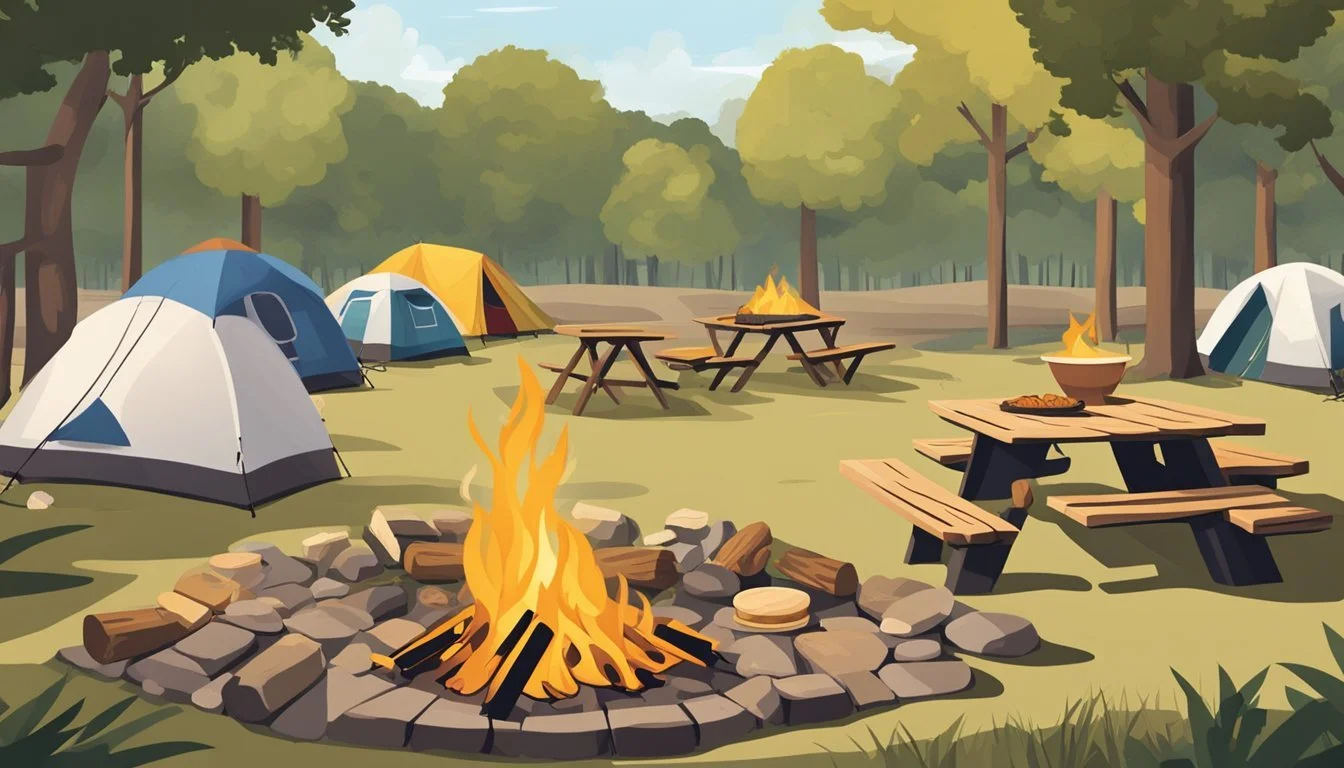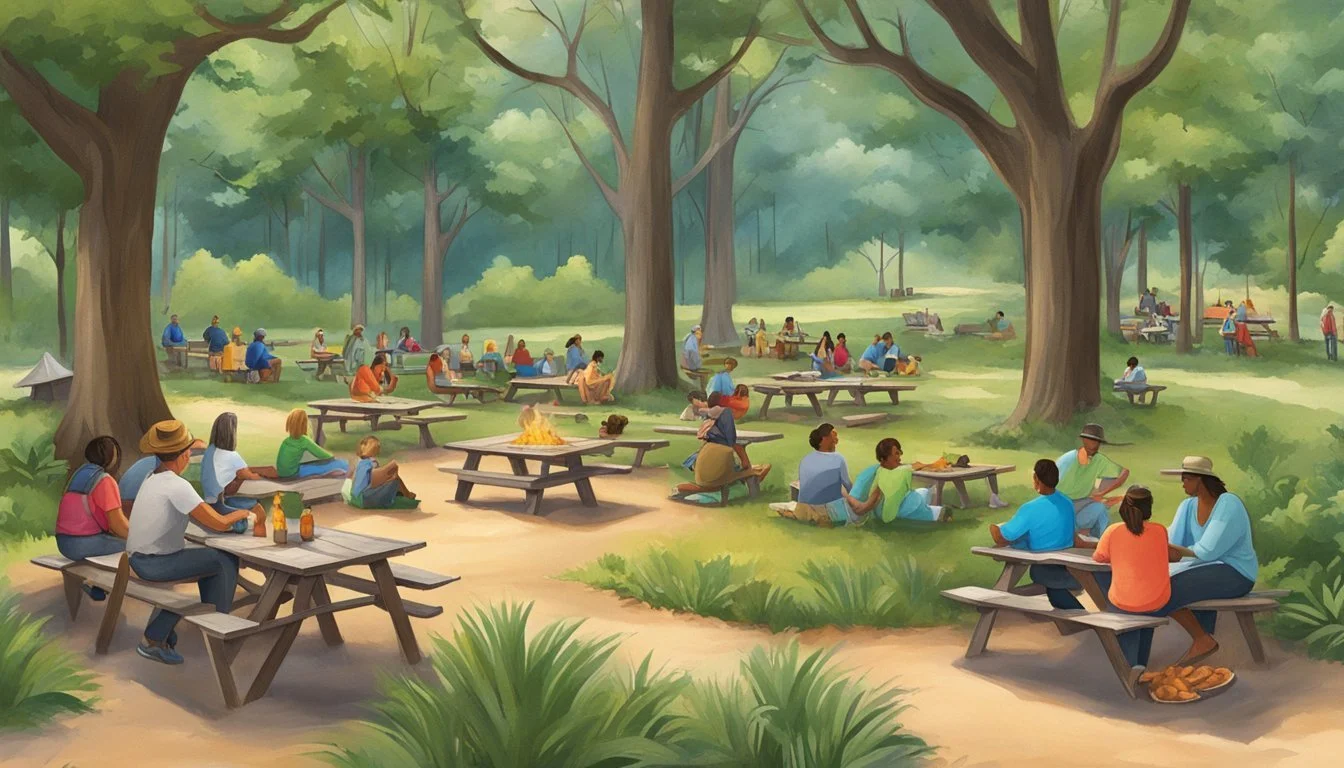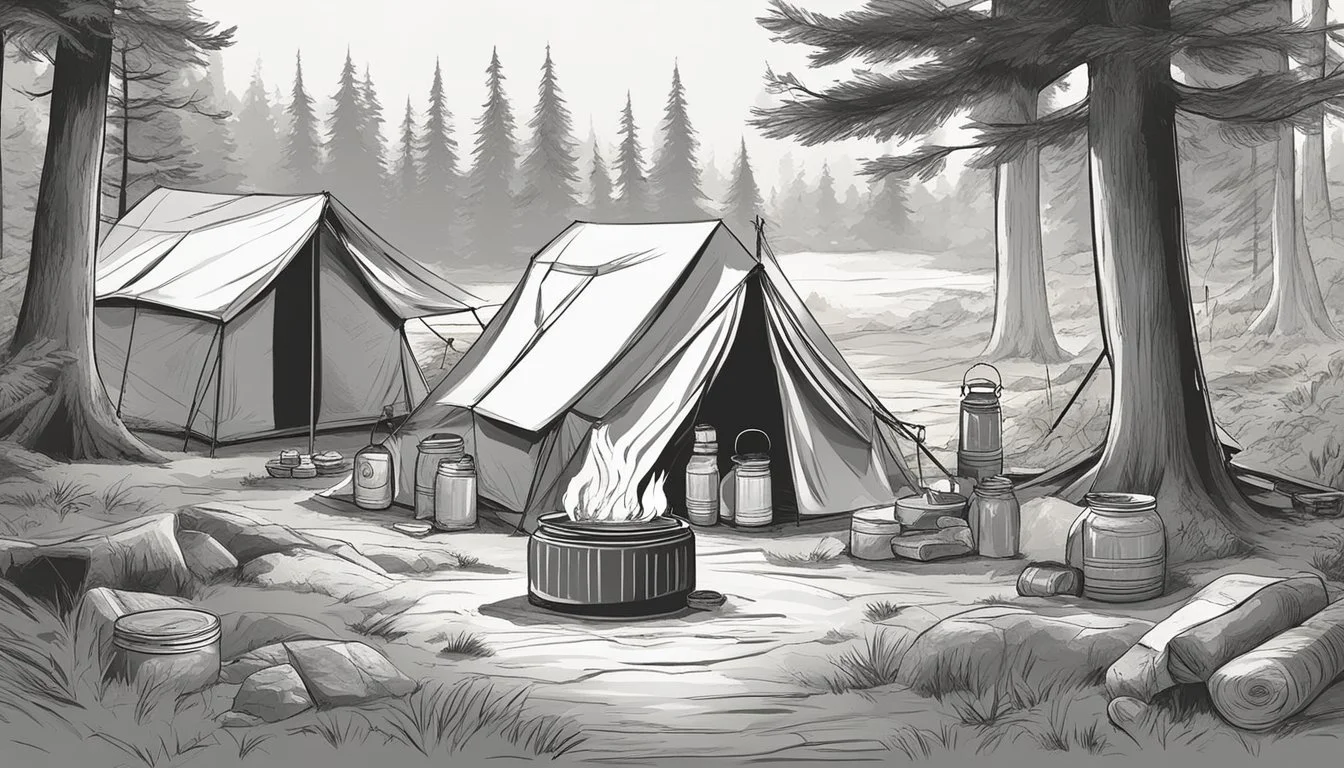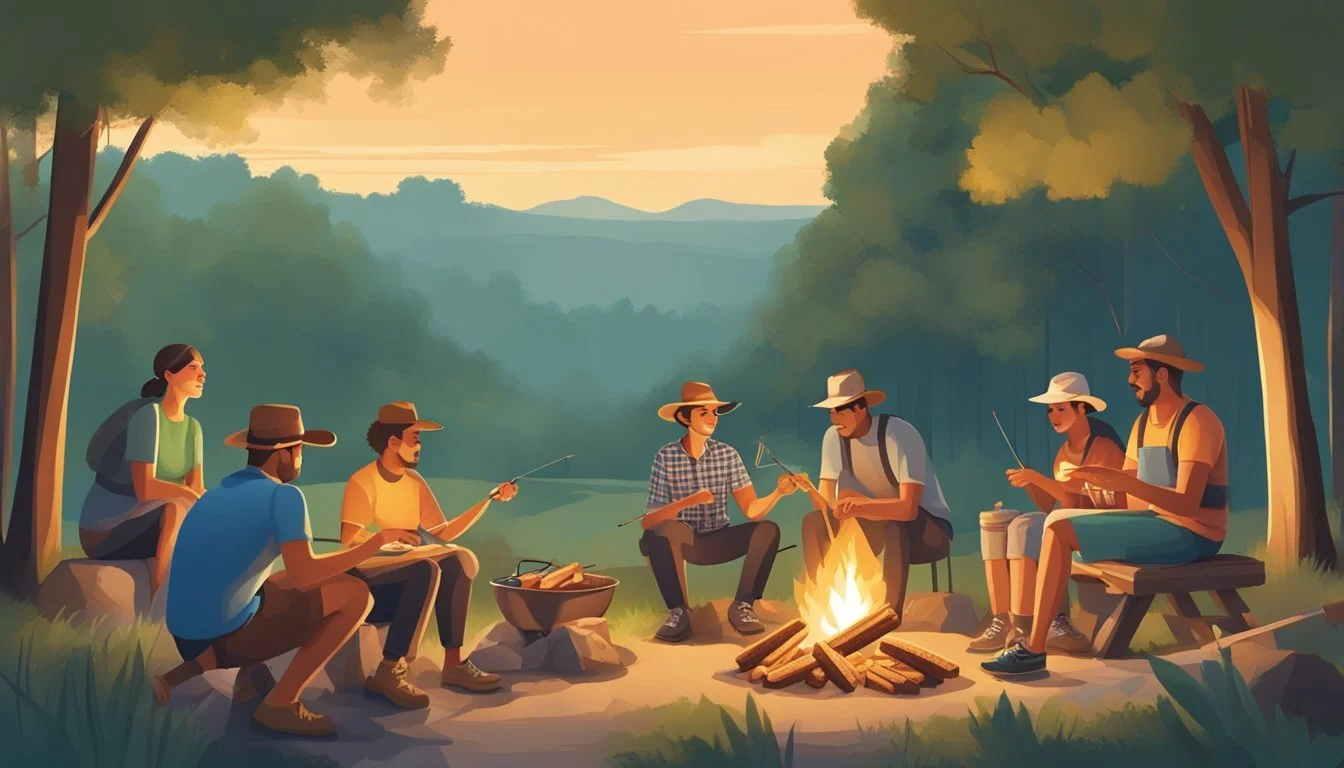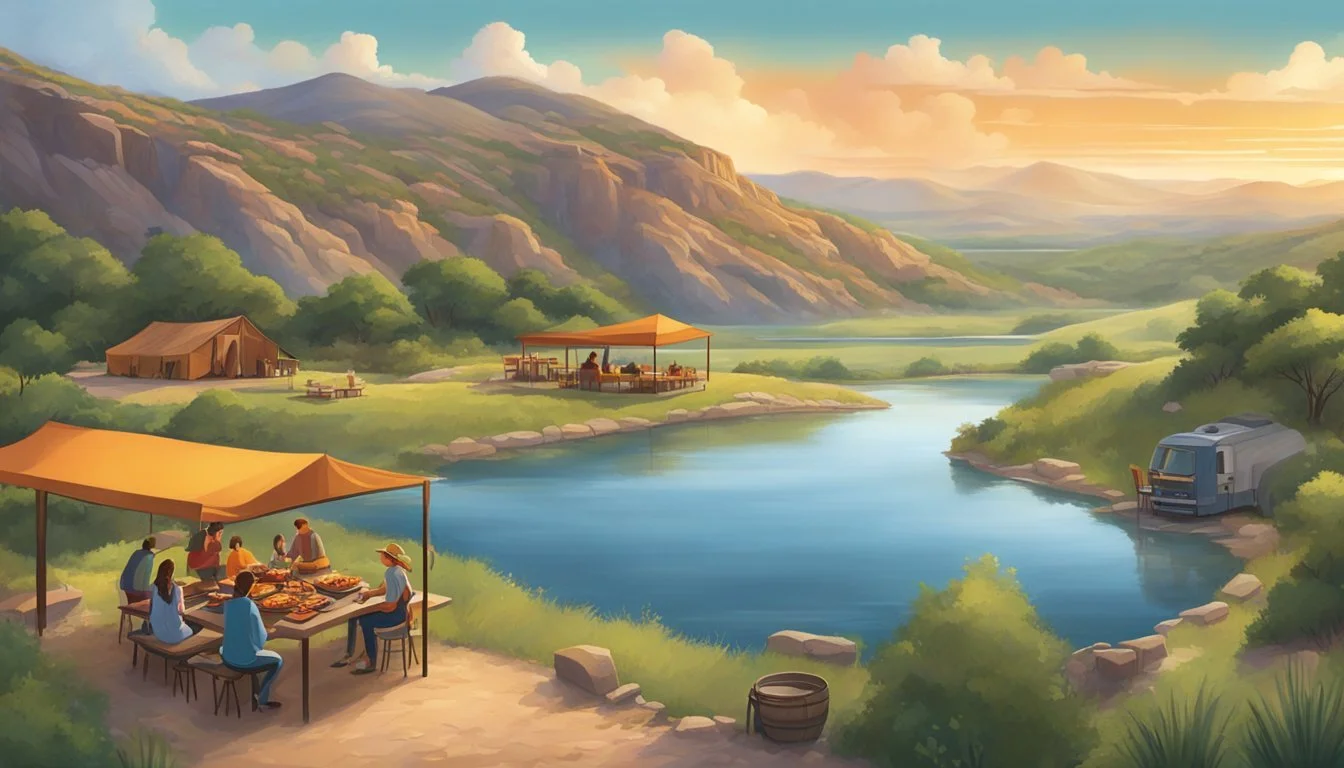Texas State Parks Camping Guide
Best Foods to Pack and Enjoy
Texas parks offer a diverse array of landscapes for outdoor enthusiasts, each providing a unique backdrop for camping adventures. From the arid deserts near Big Bend to the lush forests of East Texas, the state's natural beauty is as varied as it is vast. Whether exploring the geological wonders at Inks Lake State Park, enjoying water activities at Lake Livingston or visiting state historic sites visitors are treated to more than just picturesque views; they find a complete immersion in the Texas wilderness.
When embarking on a camping trip to a state park, the choice of food can greatly enhance the outdoor experience. Knowing what to pack is essential, as it should be both nutritious to fuel the day’s adventures and easy to prepare at a campsite. Campers often opt for classic outdoor fare like hot dogs and s'mores, but there's room for diversity in the campfire cuisine—grilled vegetables, hearty stews, and fresh fruit are also popular choices. Specialized equipment like portable grills or Dutch ovens can expand the menu further, allowing gourmets and novices alike to enjoy satisfying meals under the stars.
Overview of Texas National Areas
Each state Park offers a rich tapestry of natural beauty, making them a haven for nature lovers and outdoor enthusiasts. Spanning over 80 state parks, these public lands showcase Texas’ diverse ecosystems, from rolling hills and dense forests to pristine beaches and rugged canyons.
Hiking enthusiasts will find a network of trails suitable for all skill levels. Trails wind through various landscapes, offering chances to view local wildlife and enjoy the tranquility of nature. Often a state park will feature water activities including swimming, fishing, boating, and paddling, catering to visitors who enjoy water sports.
Conservation of these natural resources is a key focus in each state park, ensuring that the environmental heritage and history of each state park is preserved. As stewards of conservation, each state park works with their wildlife department to maintain the natural habitats and biodiversity that define the Lone Star State.
Key Activities Description Hiking & Trails Trails for all levels meander through diverse landscapes Water Recreation Including swimming, fishing, hunting, and boating in various parks Wildlife Observation Opportunities to see native species in their natural habitats
The State Park system encourages visitors to engage with the environment respectfully and responsibly. State Parks serve not only as recreational areas but also as education, as gateways to learning about Texas's ecological wealth and the importance of its preservation.
Essentials of Camping in Texas
In each state park, proper preparation and adherence to park rules ensure a safe and enjoyable camping experience for tent enthusiasts, RV adventurers, and families alike.
Choosing the Right Campsites
When selecting a campsite in Texas, consider the type of camping that suits your needs. Tent camping and RV camping options are available, with amenities varying by park. Reservations are strongly recommended, especially during peak seasons, to secure your spot. Utilize the State Park & Wildlife Department's website to find campsites with the right balance of shade, accessibility, and scenic views.
Understanding Park and Camping Regulations
Familiarizing yourself with state park regulations is essential for a hassle-free camping trip. Burn bans may be in effect, so check the current status before starting a campfire. Campers must only use designated campsites and should acquire the necessary fishing licenses if they plan to fish. Trash and wastewater must be disposed of properly to preserve the park's natural beauty. Always maintain a conservation mindset to protect the wilderness and its wildlife.
Camping Safety and Ethics
Camping safety is paramount, which means keeping a watchful eye on children and being mindful of the local wildlife, like the protected black bears. Practicing Leave No Trace principles contributes to conservation efforts and respects the natural habitat. Stay informed about the wildlife in the area, store food securely, and maintain a safe distance from animals. Be aware of your surroundings to prevent accidents.
Camping Equipment and Tools
Campers should prioritize essential equipment to enhance their outdoor experience when venturing into Parks. A durable tent is fundamental for shelter against the elements. Campers must select a tent based on the season and the number of occupants. For tool usage, knowledge in handling axes, knives, and saws is crucial for tasks like cutting firewood or crafting camping tools.
Camping Equipment:
Sturdy and weather-appropriate tent
Ground tarp for additional moisture protection
Sleeping bags rated for the current season's temperature
Inflatable or foam sleeping pads for comfort
Reliable multi-tool for various campsite tasks
Tools:
Multi-tool with pliers, screwdriver, and knife
Hatchet or axe for wood chopping
Waterproof matches or lighter for fire starting
Ropes and stakes for securing the tent
Maps play an integral role in navigating the park's terrain. Campers should carry physical maps even if electronic GPS devices are available.
Navigation:
Updated physical map of the park
Compass or GPS unit
Itinerary left with a friend or park ranger
Recreational Activities in Parks
Texas National Areas offer an abundance of outdoor pursuits for nature enthusiasts in each region and each county. From serene lakes perfect for water-based activities to rugged trails inviting hikers of all levels, visitors have the opportunity to connect with nature.
Hiking and Trail Exploration
Within the state Parks, there are numerous trails to enjoy the country, which are tailored to different experience levels and interests. Hiking enthusiasts can choose from a variety of paths ranging from quiet, shaded trails to challenging, rugged country terrains leading to breathtaking views or a historic site.
Family-friendly trails to walk: Ideal for beginners to explore among trees or a leisurely stroll to find bird species
Backpacking trails to walk: Designed for more experienced hikers seeking adventure
Water-Based Activities
Water sports and activities are a major draw at many Parks. Guests can swim in designated areas, fish in abundant lakes and rivers, or paddle across tranquil waters. For those without their own equipment, several parks offer rentals.
Swimming: Visit to cool off in the summer at various swimming spots.
Fishing: Cast a line in both freshwater and saltwater environments.
Paddling: Visit to explore park waterways by kayak, canoe, or paddleboard.
Wildlife Observation and Stargazing
A state park is a haven for wildlife enthusiasts to explore for bird watching and observing the diverse Texas wildlife. Meanwhile, Parks in the state also boast some of the best night sky views, free from city light pollution, making stargazing a popular activity.
Wildlife: Spot local species in their natural habitat.
Bird watching: Bring binoculars for an up-close look at native and migratory birds.
Stargazing: Enjoy clear night skies.
Unique Features of Parks in Texas
Parks in Texas today offer an abundance of natural beauty, each with its own distinct characteristics. From the grandeur of canyons and the refreshment of clear rivers, to the marvel of ancient rock formations and vast sand dunes, these parks provide an array of experiences for the outdoor enthusiast.
Palo Duro Canyon State Park
Location: Canyon, Texas
Activities: Hiking, camping
Palo Duro Canyon State Park is home to the second largest canyon in the United States. Visitors are treated to a dramatic landscape with colorful geological formations, steep mesa walls, and extensive hiking trails.
Garner State Park and the Frio River
Location: Concan, Texas
Activities: Swimming, fishing pier hiking
Garner State Park features the picturesque Frio River flowing through 1,774 acres of scenic Hill Country terrain. Willow-lined paths and bald cypress trees dot the banks of the river, providing perfect spots for swimming and relaxation. The park's summer dances are a longstanding tradition, offering nightly entertainment.
Monahans Sandhills State Park
Location: Monahans, Texas
Activities: Hiking, sand surfing
Monahans Sandhills State Park offers a unique desert experience with rolling sand dunes that change shape with the shifting winds. These dunes provide hiking challenges and the opportunity for sand surfing. The park's flora and fauna have adapted to the harsh environment, creating a special ecosystem for wildlife observation.
Enchanted Rock State Natural Area
Location: Fredericksburg, Texas
Activities: Hiking, rock climbing, stargazing
At Enchanted Rock State Natural Area, the massive pink granite dome rises above Central Texas and beckons hikers and rock climbers. This natural landmark holds spiritual significance for Native American tribes and offers a network of trails surrounding the area.
Dinosaur Valley State Park
Location: Glen Rose, Texas
Activities: In this park find dinosaur tracks, camp, picnic, hike, mountain bike, swim, fish and paddle in the river depending on the water levels, watch for wildlife.
In this state historic site, dinosaur tracks have been hiding here for 110 million years, but local residents have only known stories about them for around 110 years. Picture dinosaurs lumbering down the Paluxy River.
Caprock Canyons State Park
Location: Quitaque, in far West Texas
Activities: Caprock Canyons State Park features more than 14,000 acres of rugged but picturesque redrock and limestone canyonlands.
Caprock Canyons State Park in West Texas is the perfect place to return to nature. The bison (What wine goes well with bison?) roam the plains, so take caution when driving and do not approach them. In this park there are ninety miles of trails are open for easy to strenuous hiking and biking in this historic site with rock art where native Americans lived for thousands of years.
What to Eat on Your Camping Trip
When planning meals for a camping trip in Parks, it is important to consider food that is both easy to transport and prepare.
Meal Planning and Food Safety
Meal Planning: Before setting out, campers should carefully plan each meal to ensure they have all necessary ingredients. Foods like pasta, rice, and canned proteins are favored for their long shelf life and minimal preparation requirements.
Food Safety: Safe handling and storage are paramount. Campers should use insulated coolers with ice packs for perishables and store all food items in sealed containers to protect from wildlife, particularly in areas inhabited by black bears. It's important to maintain a clean campsite to prevent attracting animals.
Campfire Cooking and Recipes
Campfire Basics: A campfire provides a heat source and enhances the camping atmosphere in any state park. Before lighting a fire, campers must check for any fire restrictions in the park. When permitted, they should ensure that fires are contained within designated pits or rings and that all flames are completely extinguished after cooking.
Recipes: Simple, hearty meals that can be cooked over an open flame, such as chili, hot dogs, or foil-wrapped vegetables, are recommended. Campers can also use a grate over their campfire to grill meats or toast bread. Preparing ingredients in advance can save time and streamline the cooking process.
Pack It In, Pack It Out: Leave No Trace Principles
Campers are responsible for leaving the environment as they found it by following Leave No Trace principles. This means all garbage, including food scraps and packaging, should be collected and taken out of the state park.

